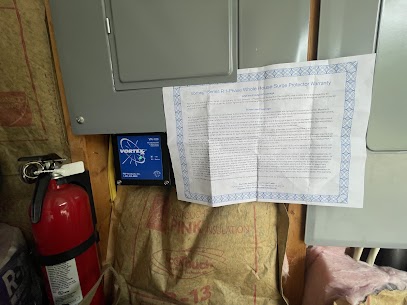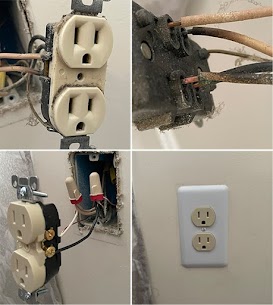At Wirefox Electric, we frequently hear from Maryland homeowners asking, “How do I stop power surges in my house?”
It’s an important question—power surges can damage your appliances, destroy electronics, and even pose fire risks. Luckily, there are practical steps you can take to safeguard your home.
In this guide, we’ll explain what causes power surges, how to prevent them, and what to do if one occurs, ensuring your home stays safe and protected.
What Is a Power Surge?
A power surge, sometimes called a voltage spike, is a sudden, brief increase in the electrical voltage running through your home’s wiring. While your electrical system is designed to handle small fluctuations, excessive voltage can overwhelm it, leading to damage.
What Causes Power Surges?
Power surges can happen for several reasons. Some of the most common include:
- Lightning Strikes
For instance, during Maryland’s frequent summer thunderstorms, a lightning strike near your home can send a massive burst of electricity through your wiring. While rare, this type of surge can cause significant damage to your electrical system. - Large Appliances
Appliances like refrigerators, air conditioners, or washing machines can create surges when they cycle on and off. These “internal surges” are less severe but can still wear down sensitive electronics over time. - Utility Grid Problems
For instance, after a heavy snowstorm in Maryland, utility companies may face issues like downed power lines or transformer malfunctions, which can cause widespread power surges. - Faulty Wiring
If your home in Maryland has older wiring, it may struggle to handle modern electrical loads, increasing the risk of surges. For example, homes built before the 1980s often have outdated wiring systems that are more prone to surges.
How to Stop Power Surges in Your House
The good news is that with a few proactive steps, you can significantly reduce the risk of power surges damaging your home. Here’s how:
1. Install a Whole-House Surge Protector
A whole-house surge protector is installed directly at your electrical panel and serves as the first line of defense against surges. It diverts excess voltage away from your home’s wiring, protecting all connected devices.
For instance, Maryland homes often experience electrical fluctuations during storms or utility repairs, making whole-house surge protectors a critical safeguard.

2. Use High-Quality Power Strips with Surge Protection
Not all power strips are created equal. Make sure you’re using ones labeled specifically for surge protection. These devices add an extra layer of security for sensitive electronics like computers, TVs, and gaming consoles.
For example, in homes across Maryland, we recommend power strips with a joule rating of 2,000 or higher for better protection. Remember to replace them every three to five years to maintain effectiveness.
3. Unplug Devices During Severe Storms
If a storm is approaching, unplugging non-essential devices can help minimize risk.
This is particularly useful for items that are expensive to replace, such as laptops or sound systems.
For instance, during Maryland’s hurricane season, unplugging devices before high winds and lightning arrive can help prevent damage.
4. Upgrade Your Electrical Wiring
Outdated or damaged wiring can make your home more vulnerable to surges.
For instance, many older Maryland homes still have knob-and-tube wiring, which is not equipped to handle today’s electrical demands.
Rewiring your home ensures a more stable and safe electrical system.
5. Schedule Regular Electrical Inspections
An electrical inspection can identify issues like loose connections, overloaded circuits, or faulty wiring before they become problems.
For example, a customer in Columbia, Maryland, called us and asked if we could find a local electrician to help with the loose receptacles.

A loose receptacle can be more than just a nuisance; it can be a serious hazard to you. During a thorough inspection, our technicians located two burned receptacles.
We replaced many throughout the house, renovating the receptacle locations with “pigtail” splices to provide a far more permanent connection, as well as advised the customer on improved safety options to provide enhanced protection.
What to Do After a Power Surge
If your home experiences a power surge, here are a few steps to take:
- Check Your Appliances and Electronics
Look for signs of damage, such as flickering lights, burnt smells, or devices that won’t turn on. - Reset Circuit Breakers
If a surge trips your circuit breakers, reset them and monitor for any further issues. - Call an Electrician
For instance, if your home in Maryland has a damaged electrical panel after a power surge, it’s critical to have a professional inspect and repair the system to ensure safety.
Expert Help From Wirefox Electric
At Wirefox Electric, we bring a genuine passion for protecting Maryland homes from electrical hazards. Whether you need surge protection installed, wiring upgraded, or an inspection, our team is here to help.
For instance, we helped Marcus Payne, who was having power issues with his wall outlets.

If you’re ready to take the next step in protecting your home, call us today at (410) 500-9035 or email us at info@wirefoxelectric.com.
